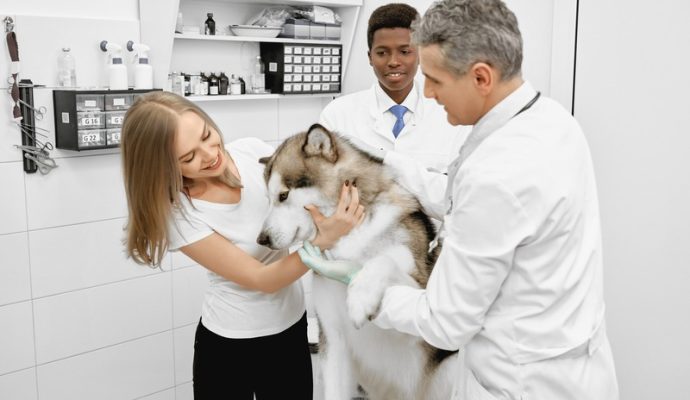Many pet canines and felines can be attached to their territory and have a sheltered and protected life with predictable everyday activities that typically do not include traveling away from home. Visiting the vet can be a challenging experience for dog and cat owners. Thankfully, we’ll discuss how to make vet visits less demanding and help your pet overcome the fear of vet visits as well.
Effective Tips to Keep Pets Calm During Vet Visits
During vet visits, pets usually show stress symptoms like vocalizations, dilated pupils, attempts to hide, and frantic panting. If you’ve come here desperate with your stubborn pet, who doesn’t want to cooperate with you each time you visit the vet, listed below are five helpful guidelines to help them conquer their fear.
1. Bring them hungry
This does not mean skipping their breakfast that day. The point is to not feed them too much before the time of the appointment. A hungry pet will be treat-motivated, and offering treats can be a reliable distraction while the veterinary team is doing their job.
2. Be knowledgeable about your dog’s symptoms
Dogs can’t talk and will never speak. This is why you need to be watchful and bold in informing your veterinarian about what your dog is experiencing. You might also create a list of symptoms your canine is struggling with. If you forget what to tell your veterinarian the day of your visit, you have a list they can read. This might also help the vet to be clear and concise with the possible conditions your dog is going through.
3. Train your pet to be sociable before vet visits
Visiting the veterinarian could be stressful for the pets as it’s a new place with strange animal odors and odd faces. To help your furry baby get used to settings like this, train them to be sociable with their fellows. Letting your furry buddy have fun with the dogs in your community or taking them to canine boarding facilities can help improve their familiarity.
Additionally, this can help skyrocket their self-confidence in socializing with unfamiliar people and other animals, whether in a veterinarian’s clinic or in strange locations. Don’t know the purpose of pet boarding centers? You may read about that by browsing the web.
4. Help your dog feel comfortable getting touched
Pets should not retaliate when getting touched, and this is something you must take note of before seeing the veterinarian. Dogs aren’t normally comfy having their tummy prodded, tails lifted, and feet and nails touched. Daily spending time doing these actions can help your pet retaliate less and eventually enjoy getting touched. This will help the pet groomers when grooming your furry pet and the veterinary team when administering pet vaccinations.
Every pet parent knows that regular grooming and preventive care like examinations, sterilization, parasite prevention, and puppy shots are vital. Animal professionals will need to touch your pet for the mentioned procedures. However, you’ll have no concerns if you train your canine to behave when being handled.
To learn more about the professional services offered by animal centers, you may visit their home page.
5. Take car rides with them more frequently
Many pets like riding in the car as they think they’re off to a park and have a good time with their fellows. However, some pet dogs only get in a car when going to a vet, which increases their stress levels. To prevent pets from thinking the same, take more car trips with your dog to different places, so they don’t just associate it with vet visits. Following this will help remove the thought that a car systematically implies vet visits.




